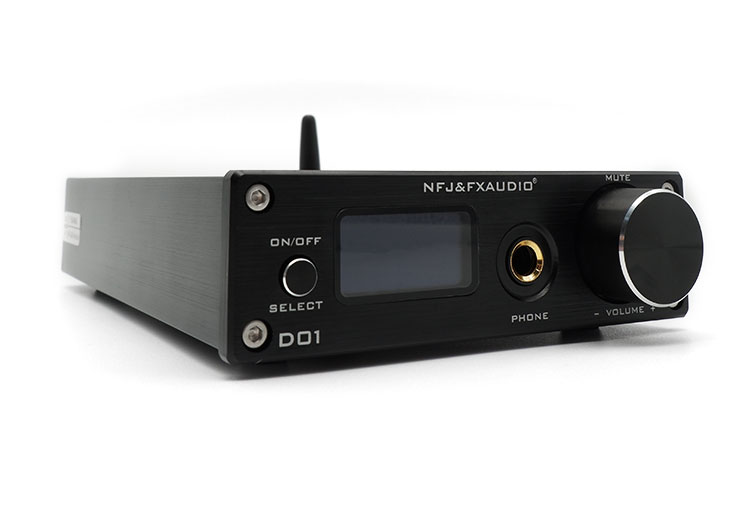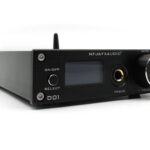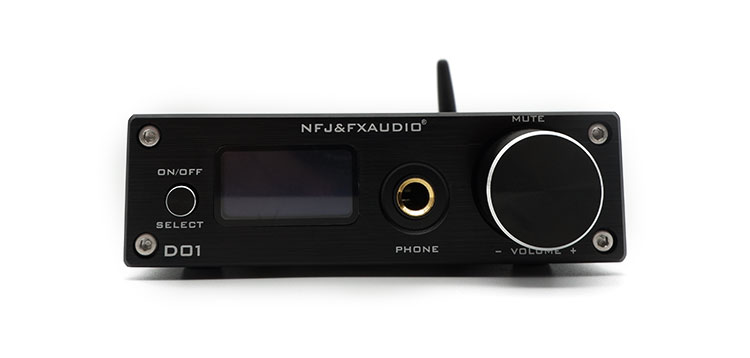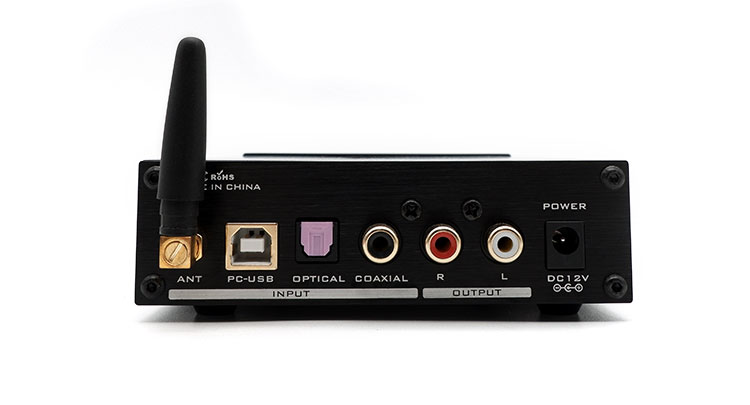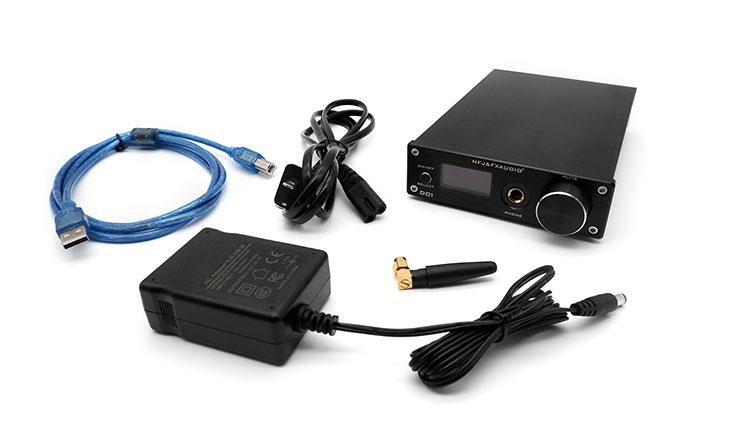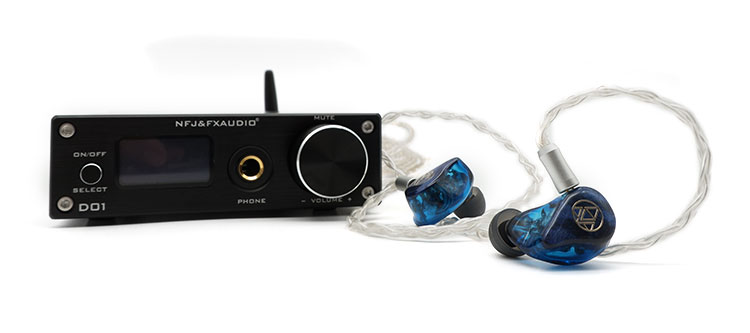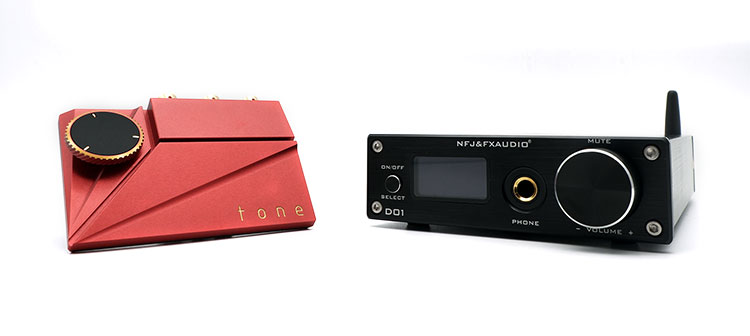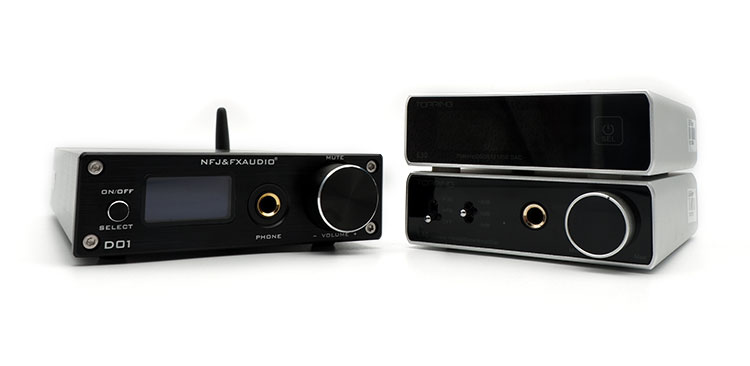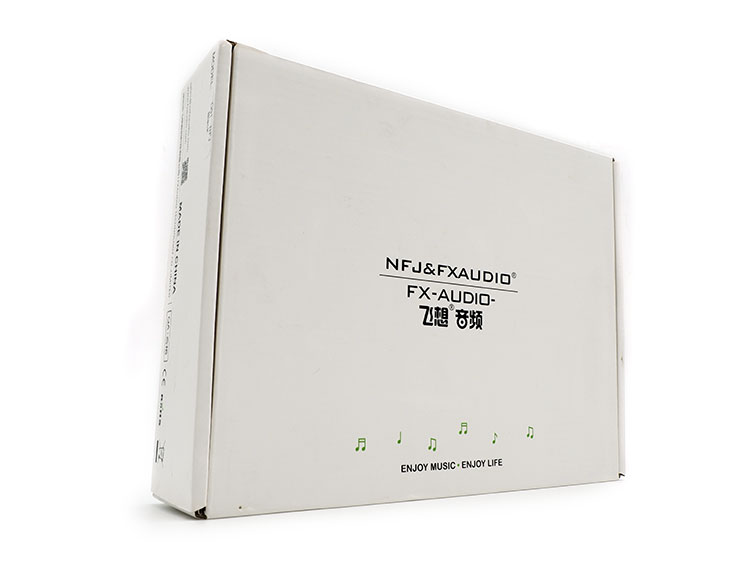The FX Audio D01 is a compact desktop integrated DAC and headphone amplifier featuring up to DSD512 decoding and LDAC wireless support. It is priced at $149.
Disclaimer: The FX Audio D01 sent to us is a sample in exchange for our honest opinion in this review. Thank you to FX Audio and Shenzhen Audio for giving us this opportunity.
To read more on amplifier products featured on Headfonics click here.
Note, this review follows our new scoring guidelines for 2021 which you can read up on here.
Shenzhen Feixiang Digital Technology Co., Ltd is a manufacturer of audio products from Shenzhen, China since 2011, and has been manufacturing products under the brand FX-audio. They have since become quite popular in the audiophile market for their DACs, Bluetooth receivers, and tube pre-amplifier stages.
While FX Audio has numerous DACs in the market as of this writing, it’s interesting to take a closer look at the latest DAC in their stable, the D01. The D01 is designed to be an all-in-one compact desktop solution that can have both wired digital connections, and Bluetooth connectivity options.
Tech Highlights
The D01 is equipped with ESS’s latest DAC chip, the ES9038Q2M version, which means that it sports 2 channels of audio decoding. The ES9038Q2M features ESS’ latest Hyperstream II technology with a dynamic range of 128dB, and a rated SNR of -120dB.
Surrounding the ES9038Q2M DAC chip is an XMOS XU208 USB controller that allows the D01 to receive PCM signals up to 32bit/768Khz, and DSD512 natively. Although this older XMOS chip lacks MQA support capability, the formats that XU208 can decode are still fairly comprehensive.
Downstream to the DAC, the D01 has a TPA6120A2-based headphone amplifier section that can deliver up to 400mW into 32Ω.
Aside from the standard wired connections, the D01 also sports a Bluetooth receiver running a CSR8675 chip that’s capable of Bluetooth 5.0, and hi-res codecs such as LDAC, and aptX HD, while still being able to receive SBC and AAC.
Design
FX-audio devices use generally understated designs and the DC01 is no exception with a simple but distinct black brushed finished aluminum chassis. This is a sturdy and functional device, but it also weighs a bit less than most desktop devices due to its compact form factor.
The front of the device has a power button on the left, which is also a multi-function button for input selection. The button is slightly loose but still functional. Pressing it to cycle through the available input options is convenient with a quick cycle time between the different input options.
The blue LED screen on the left shows the volume level, input mode, and the resolution of the signal currently being decoded. Unfortunately for some, the screen glows a bright blue, and there is no way to turn down screen brightness in case you’d prefer to listen in a dark room.
Next to the screen is a single-ended 6.35mm headphone jack, and then finally on the far right is the volume knob that doubles as a mute button. The volume knob controls a volume control IC ensuring a tighter channel balance, something that is rarely seen at this price point.
On the rear of the device are the Bluetooth antenna, USB input, coaxial input, optical input, and a pair of RCA outputs. There may be quite a few ports on the rear of the device, but the spacing and the placement of each port have been carefully considered to ensure ease of use of each input/output.
RCA pre-outs
The D01 is equipped with a pair of RCA pre-outs at the back. These pre-outs are automatically disabled when a headphone is plugged in.
Furthermore, the D01 also retains the volume level of either output in its memory. So if you leave the pre-out mode at full-scale volume, you don’t have to worry about blasting your ears out when you plug in headphones.
This might be a small thing, but it prevents a lot of accidents when switching from headphones listening to using the pre-outs of some speakers or a separate headphone amp.
Controls
The D01 is designed as a simple all-in-one desktop DAC/amp so the interface is also quite simple. With a single button that controls input selection and power, pressing the button will quickly cycle through the different input modes available.
Powering off the device will require pressing the button for at least 3 seconds, so inadvertently powering off the D01 while cycling through the inputs is easily avoided.
The volume knob is a stepped volume controller, that slowly ramps up the volume with every step on the dial. Pressing the volume knob will mute the D01’s headphone output. The D01 lacks an option for headphone amp gain adjustment, but IC volume control already ensures the usable range of the volume control is wide enough to accommodate more sensitive loads.
Bluetooth
The D01 is equipped with a Bluetooth 5.0 receiver capable of Hi-Res Bluetooth codecs like LDAC and aptX HD. In practice, the Bluetooth receiver on the D01 is a convenient addition to the DAC/amp.
The initial connection via Bluetooth is straightforward, while subsequent connections are automatic as long as the D01 is set to Bluetooth input mode.
When listening on Bluetooth, it’s almost an expectation that there will be a drop in sound quality. On the D01 however, it’s surprising that the sound quality using LDAC wireless is close to the wired connection performance. This is a mark of a well-implemented Bluetooth connection.
Packaging & Accessories
The package of the D01 is not much to look at, but it’s functional. It comes in a white box, with foam inserts that will ensure that the device is protected in storage and transport.
The accessories that come with the D01 include a USB cable, the Bluetooth antenna, and the power adaptor. Though it might not seem like much, it’s enough to get the device running right out of the box, so there’s nothing more that I could ask for.
Sound Impressions
DAC
To assess the DAC section on the D01, I plugged in the pre-amp outs to my Burson Soloist 3X and then maxed out the volume of the pre-outs on the D01.
On first listen, it doesn’t seem like the D01 emphasizes any specific frequency range. It’s generally well-extended down to the sub-bass region, however, there seems to be a slight treble roll-off at the other extreme.
The bass on the D01 is not particularly thick but is pleasantly tuned. The impact of drum hits is slightly blunted, so don’t expect heart-thumping bass from the D01. Each drum hit is slightly rounded and full, but may sometimes lack a sense of hollowed texture.
The midrange on the other hand is textured properly, more so than the rest of the frequency spectrum. Vocals have a sense of texture but remain strikingly accurate. Vocals from the likes of Josh Groban have a sense of authority.
Timbre in the midrange is on the safer side, with acoustic instruments having a slight warm tilt. While the treble is on the safer side, it is still crisp with a slight tendency towards splashiness resulting in some treble harshness in lesser recordings.
With classical recordings, the D01 has a good dynamic range. However, where quieter passages have a gentle presentation, the crescendos don’t quite have that engagement factor when they inevitably come in.
The D01 doesn’t particularly add much width to the soundstage presentation. The images created within the soundstage are pretty clear, the directionality of the images created are also accurate. However, when it comes to the layering within the soundstage, most of the images are pushed forward more than they usually are.
DAC/Amp
The DAC section strives to have a more or less neutral presentation. Interestingly, the headphone amp section doesn’t strive to have the same flat frequency response. This more colored frequency response gives the D01 a bit more character as a DAC/Amp.
The bass is still extended well, where sub-bass notes can take on an ambient quality. Going up into the mid-bass region though, there is a slight emphasis in the mid-bass region. This results in drums having a perception that drum hits have a touch more impact. The bass region has a rounded quality and is generally textured, but very solid.
The vocal texture is presented well with a decent level of detail. There is also a touch more euphony in the vocal presentation when going through the amp. Acoustic instruments still retain that warmer tone, so instruments like guitars or pianos have a more full-bodied presentation.
Treble is still a bit on the safe side, with that slight roll-off. However, when there are passages that err towards the more sibilant side of things, the touch of treble harshness becomes slightly more prominent depending on the track.
The dynamic range is still pretty good, and the gentler passages retain that sense of control and subtlety. The soundstage is not particularly wide or dispersed, and the soundscape is generally finite.
Image clarity is good, but the image that is created is a bit too large for the more closed-in feel of the soundstage, making the images blur together a bit. The directionality of the images is accurate, however, the images that are created are compressed together making them feel like they simply occupy the same general layer within the soundstage.
Synergy
Power
On the specs sheet, it says that the D01 can deliver only 400mW into 32Ω, and 90mW into 300Ω. These numbers are not that impressive by any stretch. However, what matters most is real-world performance.
And I was surprised to find that the D01’s headphone amplifier can power my high impedance ADX5000, as well as modern planars that may require a bit more current like the Ananda and the Goldplanar GL2000.
While the D01 can produce quite a bit of power, the IC-based volume control allows the D01 to power more sensitive loads like the Mangird MT4 IEM without any volume imbalance or buzzing. This makes the D01 a versatile unit capable of powering both moderately power-hungry headphones, as well are more sensitive IEMs.
Performance
With the treble frequencies on the D01 having a more incisive presentation, the D01 pairs better with more neutral or warm-leaning headphones. Headphones like the ADX5000 or the more neutral Ananda tend to emphasize the more incisive presentation of the treble.
In contrast, the D01 pairs well with slightly warm headphones like the Audeze LCD-X, which utilizes the D01’s dynamic range very well. With the slightly warmer tilted Sony MDR-Z7, the more energetic treble region is a welcome addition while still retaining the Z7’s harmonic richness.
Another interesting pairing that I ended up enjoying is between the D01 and the Mangird MT4., where the slight weight in the midrange nicely complemented the slightly drier character of the MT4.
The D01 won’t be the perfect match for all headphones, but typically, any headphone that doesn’t have any tendency for treble harshness will pair nicely with the D01. It’s also good news that the D01 has a precision volume control that ensures that it can play well with sensitive loads.
Select Comparisons
Khadas Tone2 Pro
Technical
Just looking at the boxes of the 2 devices, there is an obvious size difference. Inside the box, the D01 comes with a few more extras, like a longer USB cable, a Bluetooth antenna, and a power supply. The box of the Tone2 Pro only contains the unit and a shorter USB C to USB C cable.
The devices themselves also have a significant size difference, where the Tone2 Pro has the footprint equivalent to a credit card. The D01 on the other hand takes a bit more space on your desk and needs to be plugged into an outlet for it to work. So the Tone2 Pro can potentially be a transportable device, while the D01 will be a bit more cumbersome for transportable applications.
In terms of features, they both have IC-based volume controls, and both have USB and Coaxial inputs. However, the D01 has a Bluetooth receiver, as well as an optical digital input.
However, when it comes to the outputs, the Tone2 Pro has options for balanced outputs both on the line-level outputs, as well as the headphone output. The D01 is just limited to single-ended outputs, however, the rear outputs are variable, so the D01 can also be used as a preamp to a near field setup.
It’s interesting to see though that internally, the 2 devices use the same DAC chip, the ESS 9038Q2M. However, D01 only uses an XMOS XU208 USB controller, which can decode PCM up to 32bit/768Khz, and DSD512. The Tone2 Pro on the other hand uses the more advanced XMOS XU216 which enables it to decode MQA and DSD512 but is limited to decoding PCM 32/384Khz.
DAC Performance
While the 2 devices make use of the same 9038 Q2M DAC chip, it doesn’t translate to the 2 devices sounding the same. As a DAC, the 2 devices have a similar neutral tonality, however, the D01 has a slightly more incisive treble range, while the Tone2 Pro is generally neutral.
The D01 is a bit more impactful than the Tone2 Pro though since the Tone2 Pro is power limited by the USB port, while the D01 has an external power supply. This also translates to the D01 having a bit more dynamic range when compared to the Tone2 Pro.
The soundstage is slightly wider on the Tone2 Pro, where there doesn’t seem to be a wall at the end. The images created by the Tone2 Pro are a bit smaller, but more precise, while the ones on the D01 are slightly larger but slightly fuzzy in comparison.
The directionality of the image is equally accurate, however, the layering within the soundstage is just a touch more fleshed out on the Tone2 Pro.
DAC/Amp Performance
As a DAC amp, it’s interesting to hear that both the D01 and the Tone2 Pro have a slightly more pronounced mid-bass region, but it’s more noticeable on the Tone2 Pro. While the Tone2 Pro is more neutral in the rest of the range, the D01 has a slightly incisive treble range, that complements warmer headphones nicely.
The Tone2 Pro is slightly less impactful when compared to the D01, probably because of the immediately available power from the off-board power supply. The D01 also edges out the Tone2 Pro in terms of overall dynamic range, where the D01 is simply more emotionally engaging when crescendos start rolling in.
Soundstage is more expansive on the Tone2 Pro, probably because of the slight treble roll-off on the D01. Images are also slightly more precise and defined on the Tone2 Pro.
The layering of those images is also a bit deeper on the Tone2 Pro, also partly because of the larger soundstage presentation. The directionality of the images within the soundstage is equally accurate on both though.
Topping E30/L30 stack
Technical
The D01 is an all-in-one unit, while the E30/L30 is a stack made of a DAC and a headphone amplifier. The footprint is slightly larger than the E30/L30 stack, while the E30/L30 stack needs to be stacked on top of each other to work as a system.
The E30/L30 stack also requires 2 different power supplies for them to work, the E30 requires a 5V power supply, which can be upgraded with fancier power supplies like the ifi iPower, or other linear power supplies.
The L30 on the other hand has a 15V AC power supply, which is an AC transformer inside. The power supply requirements of the E30/L30 stack are a bit more complicated than the power supply situation on the D01 which is just a single 12V power supply.
The available I/O’s are very similar between the 2 setups, where they both have USB, optical, and coaxial inputs. They also have similar outputs available, where both are limited to just single-ended ¼” output, and a pair of RCA pre-outs. The D01 however, has a Bluetooth receiver available as an input option.
Volume control on the D01 is done using a digital volume knob, with a volume control IC inside. The L30 on the other hand has a more traditional approach that uses a potentiometer volume control, with 3 available gain settings. Both setups allow for use with most IEMs and headphones without volume imbalance, so either volume control method will work for most applications.
Power
On paper, the L30’s headphone output has significantly more power with 2.3W available for 32Ω loads, while 230mW is available for 300Ω loads. The D01 has much lower power output figures, but generally, the D01 can push moderately difficult to drive headphones, so either headphone amp sections have enough power for most applications.
The pre-amp outputs are controlled differently between the 2 setups, where the D01 uses automatic pre-amp switching and has a record of the volume settings for pre-amp out, and headphone out.
The L30 on the other hand has a preamp switch that allows to switch over from headphone output and pre-amp output. Since there is no way for the L30 to store volume presets, there is a potential for playing at uncomfortably loud volumes when switching from 1 mode to another.
DAC Specs
For the DAC section, the E30 uses an AK4493 DAC chip, while the D01 uses an ESS 9038Q2M DAC chip. Both setups have the same decoding capability, with PCM decoding topping out at 32bit/768kHz and DSD512.
DAC Performance
The DAC sections of both setups are pretty similar in that they generally tend to lean towards being neutral. However, the D01’s DAC has a slightly more incisive treble range, which magnifies the sharper edges of recordings.
In contrast, the E30 has a notably smoother treble presentation, but it still manages to present a fairly detailed treble region. However, the D01 has a slightly more crisp overall treble presentation.
In terms of the midrange, both are pretty much neutral, however, the E30 has a bit more harmonic richness. This gives vocalist and acoustic instruments a bit more of a euphonic character.
The D01 on the other hand has a slightly more planted fundamental, giving the midrange a drier but heftier presentation. The bass is about equal on both devices, where they both provide a good amount of impact.
The soundstage on the E30 is slightly more expansive than the D01’s more walled-in approach to the soundstage. However, both devices project a similar-sized soundstage. The depth within the soundstage is a bit more fleshed out on the E30, while the image directionality is about equal on both devices. Images end up slightly more vivid on the E30 though.
DAC/Amp Performance
The L30 amp’s frequency response is distinctly linear, and the combination with the E30 results in a flat frequency response. The D01’s amp section on the other hand has a slight mid-bass emphasis with a slightly rolled off upper treble range.
While both setups can be impactful, giving drums and percussive instruments a very natural presence, the D01 makes percussive instruments a touch flatter, but more forward.
Both setups don’t emphasize the midrange too much, but of the 2 setups, the D01 leans more towards a drier presentation while the E30/L30 setup has a tinge more euphony in the midrange presentation.
The treble presentation on the D01 is slightly crisper and leans towards a more incisive treble tone. The E30/L30 stack on the other hand has a slightly smoother treble quality but still retains a crisp and detailed treble quality.
On more complicated passages where there are successive cymbal hits together with an underlying bassline, it seems that the D01 is slightly more composed. The E10/L30 stack in contrast may sometimes trip over its feet in busier passages.
Soundstage is slightly more expansive on the E30/L30 stack, but sound elements don’t manifest themselves any further than the D01 does. The vividness of the image is about equal on both, and so is the accuracy of the directions from which the images are created. However, the layering within the soundstage is just slightly more distinct on the E30/L30 setup.
Our Verdict
The D01 is designed to be an economical compact all-in-one desktop solution from FX Audio. It features most of the relevant input options that are used today, with both a headphone output and an automatically switched pre-amplifier output. This creates a feature-packed compact desktop solution.
FX Audio incorporates a myriad of input options and some advanced features into the D01, but they still ensured that it sounds good. This is generally an honest experience, with a tasteful bump in the mid-bass region. Despite having a slightly more walled-in presentation, the D01 still provides a natural sense of imaging and a natural amount of dynamic range.
FX Audio D01 Specifications
- Chipset: STM32, XMOSXU208, ES9038Q2M, TPA6120A2DWPR, LME49720NA, CSR8675
- USB: 16bit-32bit /44.1kHz-768kHz, DSD64 DSD128 DSD256 DSD512;
- Coaxial/Optical: 16Bit/24Bit 44.1kHz~ 192kHz;
- BT: 16Bit/24Bit 44.1kHz~96 kHz
- Amplifier power output:
- 400mW x2@32Ω2 THD+N< 1% 90mWx2@300ΩTHD+N<1%
- Frequency response: (+0, -0.5dB) (20Hz~ -20kHz)
- Power supply: DC 12V1A
- Size: 11.4*17.8*3.3.cm
- Weight: 0.47kg




